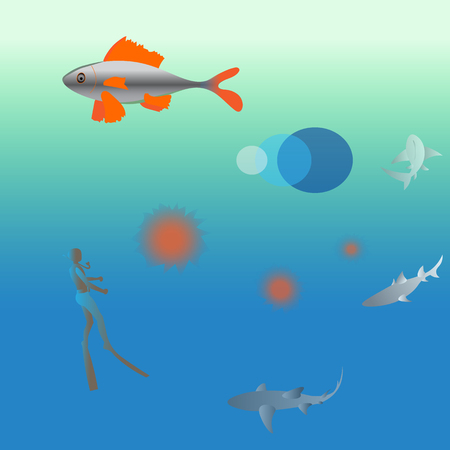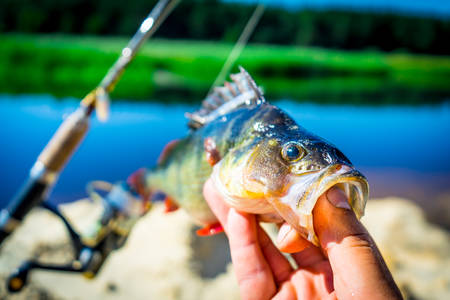Choosing the Perfect Fall Rod
When it comes to fly fishing in the fall, picking the right rod can make all the difference in your success and enjoyment on the water. As temperatures drop and fish behaviors shift, your rod needs to match both the changing conditions and your target species. For autumn fly fishing, rods in the 9-foot range offer great versatility, allowing you to cast farther when leaves start to fall and visibility decreases. A rod weight of 4-6 is typically ideal for handling everything from small trout streams to larger rivers where bass or steelhead may be running. Consider graphite rods for their lightweight feel and responsiveness—perfect for making quick adjustments as wind picks up or currents change. Don’t forget about portability if you’re hiking into remote spots; a four-piece travel rod can save space without sacrificing performance. Ultimately, choosing a rod tailored to autumn’s unique challenges will enhance your casting accuracy, improve your ability to fight fish, and ensure a memorable season on the water.
Reliable Reels for Autumn Anglers
When it comes to fly fishing in the fall, having a reliable reel is just as important as choosing the right rod. The cooler temperatures and unpredictable weather can put your equipment to the test, so selecting a reel that stands up to these conditions is crucial. Here are some key features to keep in mind when picking out a reel for autumn adventures:
Smooth Drag Systems
A smooth drag system is essential for handling strong, cold-water fish that are more active in the fall. Look for reels with sealed or fully enclosed drag systems to keep out moisture and debris, ensuring consistent performance even in damp or chilly conditions.
Durability Against Cold Weather
Fall weather can be tough on gear. Choose reels made from corrosion-resistant materials like anodized aluminum or high-quality composites, which can withstand rain, sleet, and sudden temperature drops without seizing up or corroding.
Comparison Table: Key Reel Features for Fall Fly Fishing
| Feature | Benefit | Why It Matters in Fall |
|---|---|---|
| Sealed Drag System | Keeps water and dirt out | Prevents freezing and malfunction on cold, wet days |
| Anodized Aluminum Body | Resists corrosion and wear | Stands up to wet weather and cold temperatures |
| Large Arbor Design | Faster line retrieval; less line memory | Helps land energetic fall trout quickly before they tire themselves—or you—out in frigid water |
| Ergonomic Handle Grip | Comfortable hold with gloves on | Makes reeling easier when your fingers are numb from the chill |
Pro Tip:
If you plan to fish late into the season, consider packing an extra reel spool loaded with a different weight line. This allows you to adapt quickly if changing weather conditions require a switch in tactics or target species.

3. Essential Fly Lines and Leaders
When fall temperatures start to dip, choosing the right fly line and leader becomes crucial for successful fly fishing. As water cools, fish often move deeper or slow their feeding patterns, so your rig needs to adapt accordingly. For starters, consider switching to a weight-forward floating line with a cold-weather coating; these lines remain supple even in chilly conditions and help maintain precise casts when you need them most. If you’re targeting trout holding in deeper runs or pools, an intermediate or sink-tip line can get your fly down to where the fish are staging without sacrificing control.
Leaders also deserve special attention in the fall. Fish can become finicky as they prepare for winter, so opt for longer leaders—typically 9 to 12 feet—to present flies more naturally in clear, low-flow autumn waters. Stepping down to lighter tippet sizes like 5X or 6X can make a difference when trout are especially wary, but don’t go too light if you’re fishing around heavy structure where abrasion resistance is key.
Don’t forget to adjust your setup based on local river conditions and target species. In colder months, try using fluorocarbon leaders, which have lower visibility underwater and sink faster than traditional monofilament. This helps keep your nymphs or streamers in the strike zone longer. Being adaptable with your lines and leaders will give you an edge as fall weather brings ever-changing water flows and fish behavior.
4. Layering Up: Fall Fishing Apparel
When it comes to fly fishing in the fall, unpredictable weather is all part of the adventure. Staying warm and dry is crucial, and that means smart layering is a must. Whether you’re casting in the early morning chill or wading into cold streams, having the right apparel can make or break your day on the water.
Why Layering Matters
Layering isn’t just about comfort—it’s about safety, too. Cold temperatures and wet conditions can lead to hypothermia if you’re not prepared. By wearing multiple layers, you can adjust your clothing throughout the day as temperatures change, keeping yourself comfortable and focused on landing that next big trout.
Essential Fall Fly Fishing Layers
| Layer | Purpose | Recommended Materials |
|---|---|---|
| Base Layer | Wicks moisture away from skin | Merino wool, synthetic blends |
| Mid Layer | Insulation and warmth | Fleece, down, synthetic fills |
| Outer Layer | Protects from wind and rain | Waterproof breathable jackets (Gore-Tex, similar materials) |
| Waders & Boots | Keeps lower body dry and insulated in the water | Neoprene, breathable fabrics with good grip soles |
The Role of Waders and Jackets
No fall fly fishing kit is complete without quality waders and a reliable jacket. Chest waders made from breathable materials keep you dry while allowing sweat to escape—essential when you’re active on chilly days. Pair them with sturdy boots that provide traction on slippery riverbeds.
Tips for Choosing the Right Apparel
- Avoid cotton: It holds moisture and loses insulation value when wet.
- Opt for zippered layers: Easy to add or remove as conditions change.
- Pockets matter: Look for jackets with ample pockets for storing tippet spools, fly boxes, and snacks.
- Packing extras: Bring along an extra pair of socks and gloves in a waterproof bag—just in case.
Dressing smart with layered apparel ensures your focus stays where it belongs: on the river, not on the weather. With the right combination of base layers, insulating pieces, and waterproof outerwear, youll be ready for whatever fall throws your way during your fly fishing adventures.
5. Must-Have Accessories for the Season
When it comes to fall fly fishing, having the right accessories can make all the difference between a successful day on the water and a frustrating one. Beyond your rod and reel, a few key extras will help you stay organized, comfortable, and ready for whatever autumn throws your way. First up, invest in a high-quality waterproof pack or sling. Fall weather can be unpredictable, with sudden showers or misty mornings common across much of the U.S. A waterproof pack keeps your gear dry and secure, whether you’re wading deep rivers in Montana or hiking along Appalachian streams.
Polarized sunglasses are another must-have for fall outings. Shorter days mean changing light conditions, and fallen leaves can add extra glare to the water’s surface. Polarized lenses not only protect your eyes from harmful UV rays but also cut through glare so you can spot trout lurking under overhangs or behind submerged logs. Choose a pair with amber or copper-tinted lenses for the best contrast during cloudy autumn days.
Don’t overlook the importance of fly boxes suited for fall hatches. As aquatic insects change with the season, having a well-organized fly box stocked with autumn patterns—think blue-winged olives, midges, and October caddis—can save precious time on the riverbank. Opt for waterproof fly boxes to keep your flies dry if you get caught in an unexpected drizzle.
Other handy accessories include fingerless gloves to keep your hands warm while maintaining dexterity, a sturdy net with rubber mesh to minimize harm to fish during catch-and-release, and a reliable headlamp for those early morning starts or late evening bites. Toss in some extra tippet spools and a multi-tool for streamside repairs and you’ll be ready for anything.
By rounding out your kit with these essential accessories, you’ll be prepared to handle the unique challenges of fall fly fishing—and enjoy more productive (and comfortable) days on America’s legendary waters.
6. Targeting Fall Fish: Flies and Tactics
As the leaves turn and water temperatures drop, fall fly fishing becomes all about adapting your gear and approach to the season’s unique conditions. Selecting the right fly patterns and mastering seasonal tactics is key to enticing trout, steelhead, and other active species. Here’s how you can dial in your strategy for success this autumn.
Top Fly Patterns for Fall
Trout Favorites
Fall trout are often focused on baitfish and aquatic insects preparing for winter. Popular patterns include Woolly Buggers (olive, black, or brown), Zonkers, and Muddler Minnows—these streamers imitate small fish and can provoke aggressive strikes. For nymphing, use Pheasant Tails, Hare’s Ears, or Copper Johns in sizes 12-18. On sunny days with hatches, Blue Winged Olive (BWO) dries and October Caddis patterns are reliable choices.
Steelhead Standouts
Steelhead become more active in cooler flows. Egg patterns like Glo Bugs or Otter Eggs are a staple in areas where salmon are spawning. Intruder-style flies in bright colors (chartreuse, pink, orange) work well in stained water, while more natural hues are better for clear conditions. Don’t overlook classic soft hackle wet flies swung through riffles—these can entice even wary fish.
Other Species
For smallmouth bass or panfish still feeding before winter, Clouser Minnows, crayfish imitations, and articulated streamers can yield great results along rocky banks and deeper pools.
Effective Fall Fishing Techniques
Streamer Fishing
Fall is streamer season! Use a sink-tip line or weighted fly to get your streamer down into deeper runs where fish are holding. Vary your retrieve speed and direction—erratic movements often trigger predatory instincts in trout and steelhead during autumn.
Nymphing the Riffles
Nymphing remains highly effective as insects become less abundant on the surface. Dead-drift nymph rigs under an indicator through riffles and tailouts where fish are stacking up before winter.
Timing Your Outings
Mornings can be chilly; target midday when water temperatures rise slightly, making fish more active. Cloudy days typically bring better action than bright sun because fish feel more secure venturing out from cover.
Tuning Your Gear for Fall Success
A 5-6 weight rod is versatile enough for most fall trout and steelhead situations. Pair it with a reel that has a smooth drag system to handle sudden runs from larger fish. Use tippet material rated slightly heavier than summer standards—fall fish fight hard and vegetation along banks can be thicker due to recent growth.
Final Thoughts
With the right flies, techniques, and properly tuned gear, fall offers some of the year’s best opportunities for fly anglers across America. Embrace the changing conditions and savor every cast amid the crisp autumn air!
